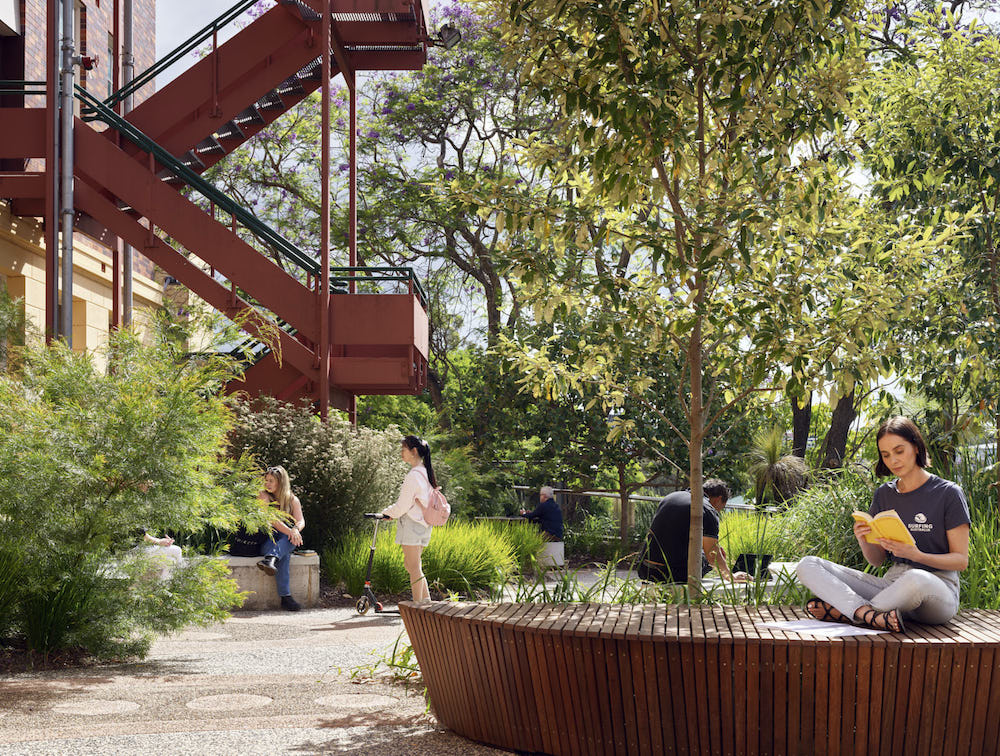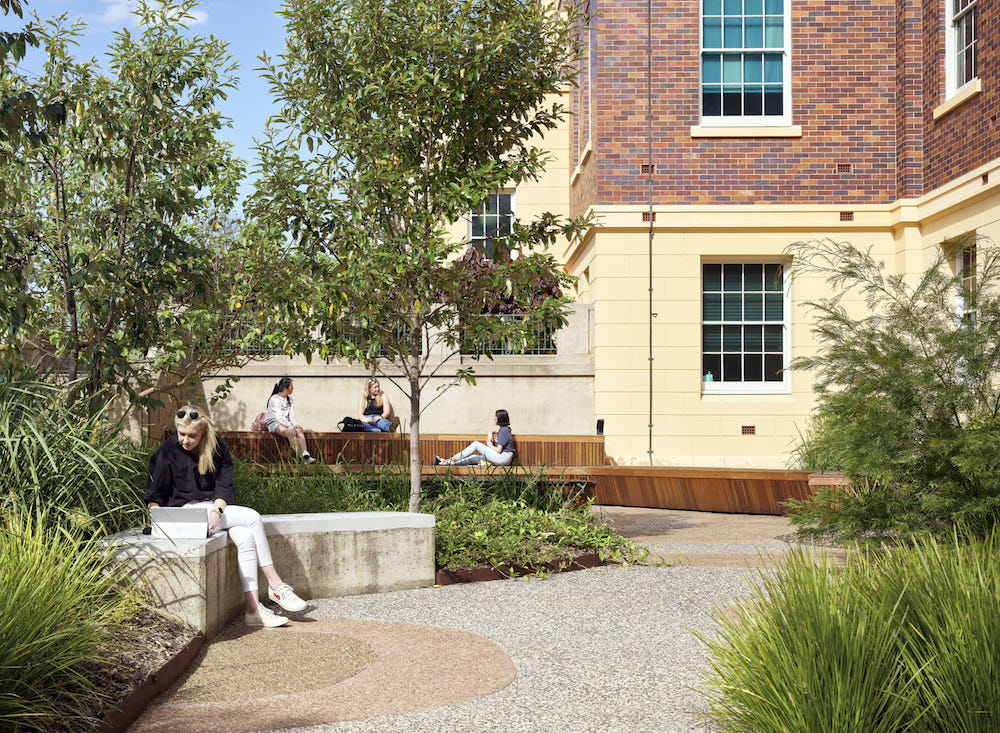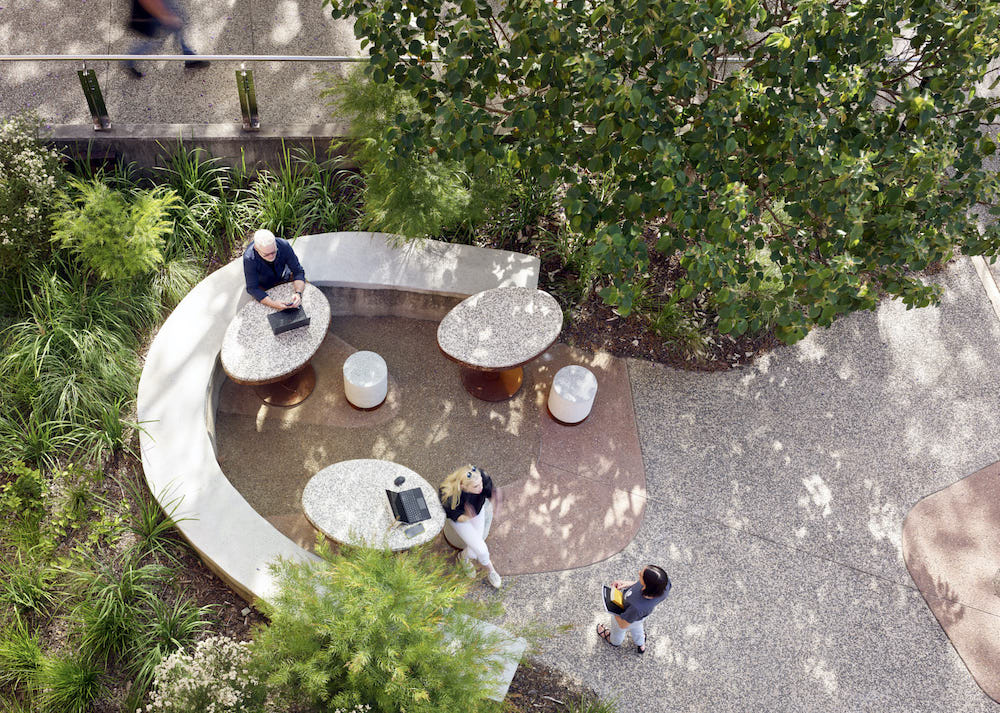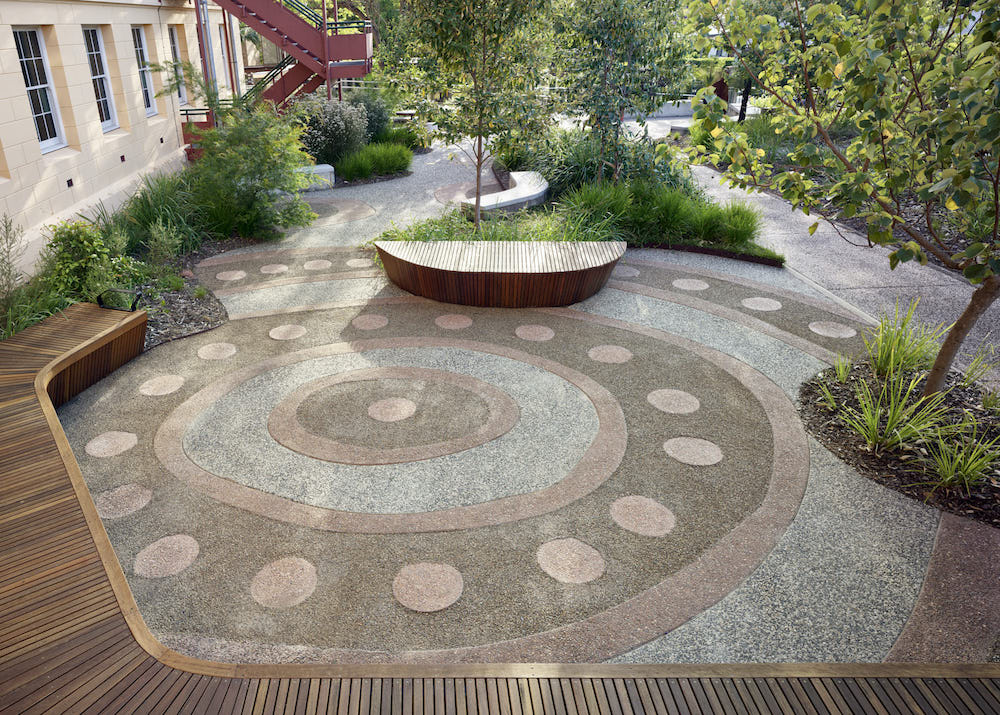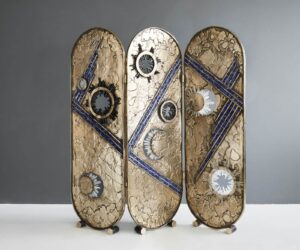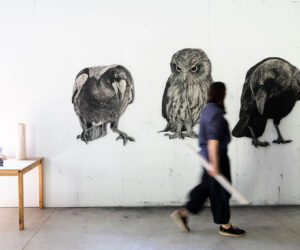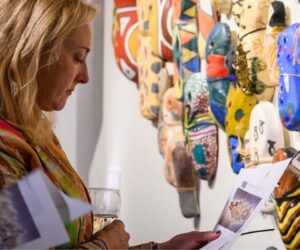New Reconciliation Garden at UQ Honours Brisbane’s Local Elders & Ecology
A new Reconciliation Garden at the University of Queensland’s (UQ) Herston campus showcases the power of collaborative design. Landscape architects from Arcadia’s Brisbane studio headed up the masterplan, design documentation and construction administration for the project, in close collaboration with UQ-appointed Multhana Property Services (an Indigenous-owned property services company) and representatives of the Traditional Owners of the land.
Arcadia Principal Nathan Clausen credits the input of Gaja Kerry Charlton, a Yuggera Ugarapul Elder, as vital to the success of the project. “Gaja’s contribution to our design workshops, and subsequent liaison with local mobs, to further interrogate and approve the design, was integral to the overall success of this garden.”
Likewise, Arcadia’s design team, including their Indigenous Landscape Strategist, worked with Gaja Kerry to develop the site narrative.
Located at the rear of the campus, the first stage of the garden spans 600m 2 and features a series of seating options where large groups can gather. Meanwhile, rammed-earth seating and bespoke tables provide an alternative for smaller groups and individuals to enjoy the space.
Drawing inspiration from bees
Jason Taylor, Arcadia Senior Associate and design lead on this project, credits a species of native stingless bees as a significant reference point for the final design. “This was inspired by the discovery of a native beehive found on the campus as well as the cultural background to Mt Coot-tha, located nearby,” Jason says. “Mt Coot-tha roughly translates to ‘Kuta’ or honey in some Indigenous dialects.”
The native bees have a unique spiral comb that inspired a number of elements within the space such as the garden layout and concrete patterns. Additionally, a large feature gathering space, containing a circular paving design, culturally symbolises a meeting point — as well as highlighting the social nature of the bee.
Showcasing medicinal plants
Notably, the garden resides within UQ’s Faculty of Medicine so it is fitting Arcadia’s design incorporates some elements of ‘Bush Medicine’. “We wanted to give students the opportunity to learn about the healing properties of plants and their traditional uses,” Jason explains. Among the planting are species such as Lolly Bush and Red Ash — sometimes referred to for their respective properties that may help soothe headaches and inflammation.
To maintain the ecology of the site, Jason stresses it was essential the garden be populated primarily with local species. “The plants benefit Herston’s natural ecosystem, including fungus, bacteria, bees, birds and butterflies, and have minimal water and maintenance requirements,” Jason adds. Other strategies, such as ‘rammed earth’ added to the sustainable design. This innovative technique — used for some of the garden’s seating — reclaimed soil from the site that was then mixed with cement and compacted within formwork.
Preserving the site’s heritage
Meticulous attention to detail was required to comply with the site’s heritage listing. One such consideration involved the preservation of sightlines to the building immediately behind the garden.
Owing to the site’s western orientation, Arcadia was keen to introduce some new trees to provide additional shading. “We identified species that would grow to a suitable height for shade but also allow for sightlines, in and between their canopies, so the building would remain in view in years to come,” Nathan explains.
This degree of thoroughness was a hallmark of Arcadia’s commitment to this project. UQ Lecturer Francis Nona, from the Faculty of Medicine’s garden steering committee, describes Arcadia’s energy and enthusiasm as unwavering. “Arcadia worked thoughtfully with us every step of the way — even creating 3D video concepts so we could better visualise the final design,” Francis says.
“By prioritising gathering spaces and incorporating patterns and shapes inspired by Indigenous artworks, people are now naturally curious about the garden’s deeper meaning and that subtly helps bring reconciliation to the forefront of conversation.
“Arcadia transformed a space that was once very dry and rarely used, into a garden that’s become a popular place for meetings, workshops and respite for students and staff during the day,” Francis says.
